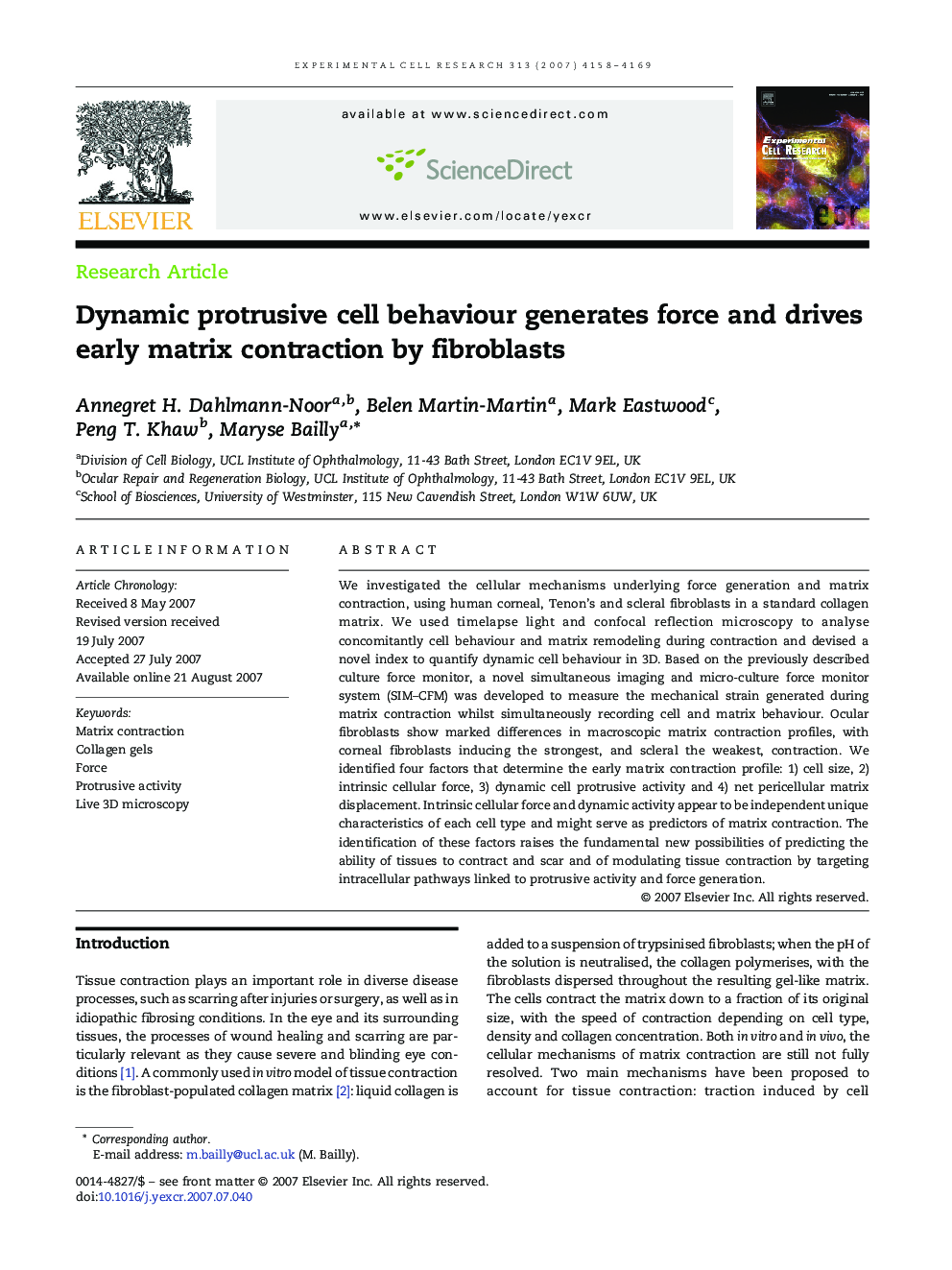| Article ID | Journal | Published Year | Pages | File Type |
|---|---|---|---|---|
| 10904713 | Experimental Cell Research | 2007 | 12 Pages |
Abstract
We investigated the cellular mechanisms underlying force generation and matrix contraction, using human corneal, Tenon's and scleral fibroblasts in a standard collagen matrix. We used timelapse light and confocal reflection microscopy to analyse concomitantly cell behaviour and matrix remodeling during contraction and devised a novel index to quantify dynamic cell behaviour in 3D. Based on the previously described culture force monitor, a novel simultaneous imaging and micro-culture force monitor system (SIM-CFM) was developed to measure the mechanical strain generated during matrix contraction whilst simultaneously recording cell and matrix behaviour. Ocular fibroblasts show marked differences in macroscopic matrix contraction profiles, with corneal fibroblasts inducing the strongest, and scleral the weakest, contraction. We identified four factors that determine the early matrix contraction profile: 1) cell size, 2) intrinsic cellular force, 3) dynamic cell protrusive activity and 4) net pericellular matrix displacement. Intrinsic cellular force and dynamic activity appear to be independent unique characteristics of each cell type and might serve as predictors of matrix contraction. The identification of these factors raises the fundamental new possibilities of predicting the ability of tissues to contract and scar and of modulating tissue contraction by targeting intracellular pathways linked to protrusive activity and force generation.
Keywords
Related Topics
Life Sciences
Biochemistry, Genetics and Molecular Biology
Cancer Research
Authors
Annegret H. Dahlmann-Noor, Belen Martin-Martin, Mark Eastwood, Peng T. Khaw, Maryse Bailly,
